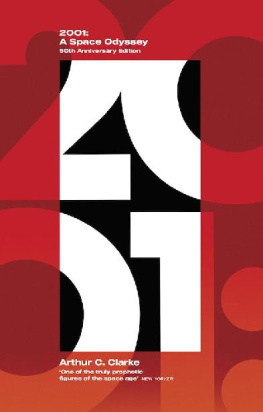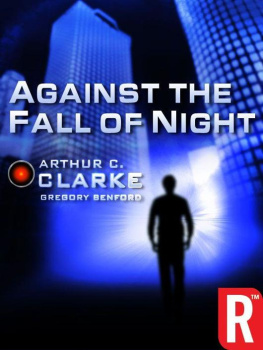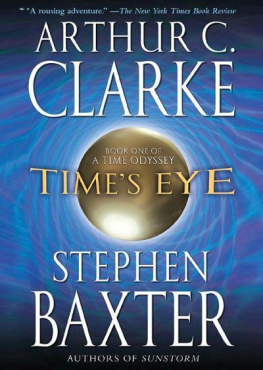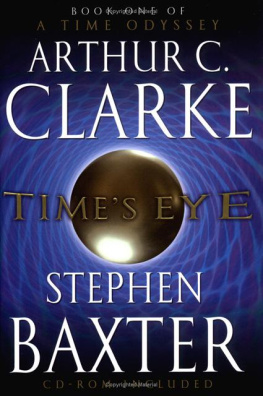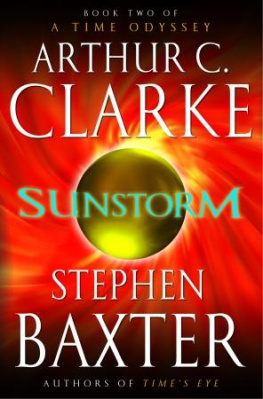SIR ARTHUR C. CLARKE:
ODYSSEY OF A VISIONARY
Neil McAleer
Copyright
SIR ARTHUR C. CLARKE:
Odyssey of a Visionary
Copyright 2013 by Neil McAleer
Cover art to the electronic edition copyright 2013 by RosettaBooks LLC.
All rights reserved. No part of this book may be used or reproduced in any form or by any electronic or mechanical means, including information storage and retrieval systems, without permission in writing from the publisher, except by a reviewer who may quote brief passages in a review.
Electronic edition published 2013 by RosettaBooks LLC, New York.
Cover jacket design by Terrence Tymon
ISBN ePub edition: 9780984811809
For who, in that unthinkable future when I am dead, will read? The printed page was just a half-millenniums brief wonder, Erasmuss and Luthers Gutenberg-Perfected means of propagating truth, Or lies, screw-pressed one folio at a time.
From the poem, The Author Observes His Birthday,
John Updike, 2005, published 2006
Also by Neil McAleer:
The Cosmic Mind-Boggling Book
The Body Almanac
Earthlove: A Space Fantasy
The Mind-Boggling Universe
The OMNI Space Almanac
Space Shuttle: The Renewed Promise
Arthur C. Clarke: The Authorized Biography (1992)
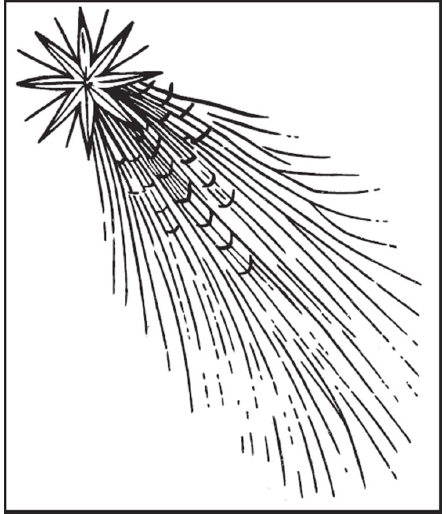
Woodcut of Halleys Comet 684 A.D published in Nuremberg Chronicles in 1493
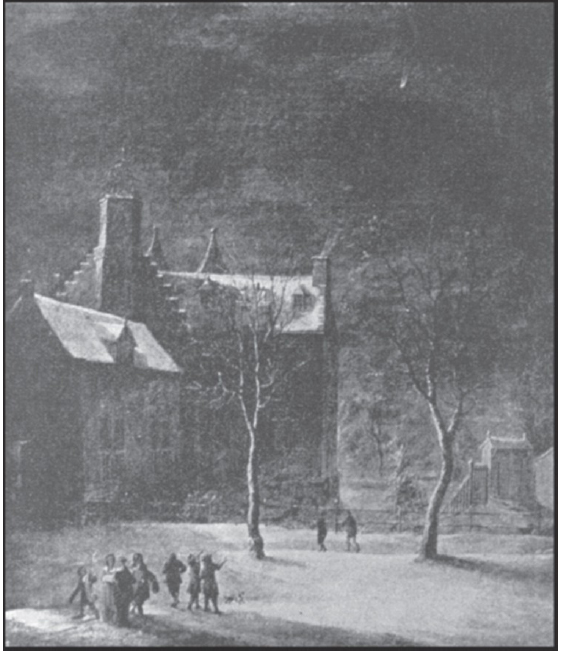
The comet of 1682 in the August skies over Cambridge: From this passage, young Edmund Halley recorded his data on seven nights and years later forecast the unnamed comets date of return: 1758.
To Fred Clarke
For his faith, encouragement, and friendship;
To John C. Sherwood
For his fine editing skills and contributions to this editions text;
To Barbara and Jim McAleer, my late parents,
Who gave me a love for books.
Too low they build, who build beneath the stars.
Edward Young
Yet somewhere under starlight or the sun My father stands.
W.B. Yeats
From the great deep to the great deep he goes.
Alfred Lord Tennyson
Contents
Planet Earth has traveled 25 orbits around the sun since this biography was conceived and begun. This new RosettaBooks edition, fully expanded and revised, has been more than 20 years in the making since the original edition appeared.
Why 20 years? This biography had to wait for the future, for the rest of Clarkes life, and for the revolution that would change our books and lives forevera revolution that Clarke predicted many times since World War II.
I met Arthur C. Clarke for the first time in the summer of 1988. Clarke had just been released from Johns Hopkins Neuromuscular Lab in Baltimore, where he underwent extensive medical tests for a few days. He was 70 years old.
Several years earlier in London he was diagnosed with the deadly Lou Gehrigs Disease, and the 1988 visit was a thorough second examination and diagnosis to learn his state of health.
The news was more than good. It wasnt Lou Gehrigs disease after all. It was post-polio syndromenot a death sentence. It gave him his life and writing career back. It was still possible that he would be alive in 2001, the year he made famous with Stanley Kubrick.
So I meet him at a Washington, D.C. hotel, after his release from Hopkins, when he was very happy and full of renewed life. Timing was really everything. As his biographer, I could preserve his life in another way.
We met and talked for several hours, with a few little tests from Arthur along the way, which I apparently passed. After a few hours, Clarke agreed that I could start his biography. That July day in 1988, I left holding his complete contact list of more than 200 names.
And that was how the Clarke biography began. The RosettaBooks edition is one more beginning, making real what Arthur predicted.
Among his many predictions, Arthur wrote about an electronic device in the 1960s he named the Newspad. This foresaw the iPad and similar devices with their basic functionsincluding e-readingand it appeared in the novel and film, 2001: A Space Odyssey.
The concept of an electronic reading device was born and widely spread by this classic film and novel about the future.
Floyd sometimes wondered if the Newspad, and the fantastic technology behind it, was the last word in mans quest for perfect communications.
The iPad was released in 2010, two years after Clarkes death.
Clarke was enthusiastic about most new technology, and he no doubt would be a relentless advocate of ebooks and readers today. I can imagine Arthur now, in his spacious Colombo office, walls lined with his books, reading the RosettaBooks edition of his biography with a childlike smile and a few spontaneous remarks or Ha! guffaws from time to time.
Neil McAleer, February 1, 2013
I KNEW ARTHUR CLARKE THROUGH HIS BOOKS AND OTHER WRITINGS, AND HIS general reputation, before he joined the CBS Apollo coverage team for three Apollo moon-landing missions: the historic Apollo 11, which took Neil Armstrong and Buzz Aldrin to the surface of the moon in July 1969; Apollo 12, which flew months later in November; and then Apollo 15, which flew in midsummer 1971.
Arthur and Apollo astronaut Walter Schirra, Jr. were regular commentators on these missions. When he was introduced on camera, Arthur was billed as one of the leading space visionaries.
When the giant Saturn V rocket blasted skyward, beginning Apollo 11s journey to the Moon in the summer of 1969, most crew and cast went outside to view the earth-shaking launch. Arthur was among that group. However, Wally Schirra, producer Joan Richman, and I stayed inside the News Studio for the launch. When the view of the ascending Saturn got cut off from sight right after it left the tower, Wally and Joan got down on the floor so they could follow the Saturns flight. All this time the entire building was shaking. What a moment. Man on the way to the moon!
It was Apollo 11s first landing on the moon that presented an emotional challenge for me. You know, I had as much time to prepare for the Apollo 11 landing as NASA did. I studied hard to learn the basic technical stuff well enough to explain it. But when Neil Armstrong stepped onto the moon, even with all that preparation, all I could say was, Man on the moonWow Oh boy Boy Oh geez. Whew! I was speechless. When that vehicle landed on the moon, I really couldnt say anything. When the historic event happened, it was beyond words. Now, with historic perspective, I think our conquest of space was probably the most important story of the 20th century.
The Apollo mission broadcasts, always deadline driven, left little or no time for personal interaction among those of us on the set. Thats why I more vividly recall those occasions where Arthur and I met up elsewhere around the world. Thats how our friendship formed over the decades.
I recall a trip my wife Betsy and I made to Sri Lanka back in the early 1980s to visit Arthur and film a CBS documentary with him for the Universe series. That was a trip Ill not soon forget. My wife and I had the pleasure of several days as his guest at Barnes Place, and for those of us who have had the experience of visiting Arthur Clarke at his Sri Lanka home, there is nothing comparable in the realm of inspiring and evocative conversation and the extraordinary warmth of a deep friendship.




